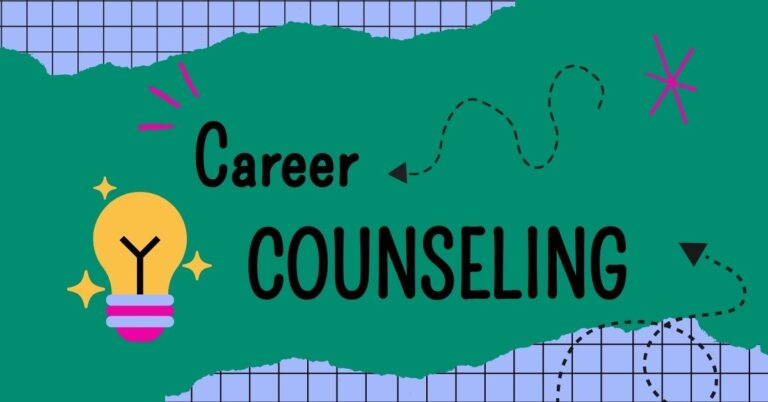Problems in Education system of Nepal
If you’re a student and someone asks you about your future career choice, the majority of responses (around 90%) tend to revolve around popular professions such as Doctor, Engineer, IT Abroad Study, or various government jobs. However, apart from these, there exists a multitude of career options in our country like forestry science, athletics, film directing, aerospace engineering, biochemistry and biophysics, art direction, chemical engineering, parasitology, social work, writing, or philosophy.


Steve Jobs’ famous quote, “Do what you love,” resonates with students worldwide. Another life-changing message can be found in the Indian movie “3 Idiots.” The movie emphasizes the importance of following one’s passion and pursuing education for personal growth, rather than solely for success. Despite these inspiring messages, many students still find themselves chasing after limited career options.
The education system of Nepal is facing heavy criticism due to various issues. The question arises as to who is to be blamed for the complications within our education system. Are the teaching patterns to blame, where teachers lack interactivity? Or is it the examination system that administers the same test to all students regardless of their interests? Another factor that contributes to the criticism is the outdated syllabus that hasn’t been updated for many years.
However, delving deeper into this matter reveals that the problem extends beyond the education system itself. The real issue lies within the ecosystem and environment we have created. For instance, if you grow up as a student in a community where engineering is highly valued and the notion of a high-quality life is associated with being an engineer, you might feel compelled to pursue that path, even if it goes against your own interests and passions.
However, the problem extends into the student’s everyday life and becomes magnified within their own circles. There are four major issues contributing to this problem:
1. Influence of Mass Media:


According to a study published by the World Health Organization (WHO) in 2021, it was found that the average child in Nepal aged 5-17 spends approximately 3 hours and 30 minutes on screen media per day. This number is likely to increase in the coming years. It is evident that when students spend such a significant amount of time engaged with media, they are highly influenced by it.
Our social media platforms are saturated with misleading and misguiding information, crime reports, political instability, sports updates, and predominantly influenced by Indian and foreign cinema. These media channels tend to focus on content that can easily go viral or trend, rather than highlighting the country’s prestige or showcasing inspiring individuals.
Moreover, the algorithms employed by these media platforms are designed in a way that only presents trending and viral content to users. It filters out personal interests, providing tailored content without allowing users to explore or search for new information. This discourages students’ natural curiosity and hampers their ability to engage in self-directed learning. Therefore, while using social media is not inherently bad, it is crucial for students to be aware of the algorithms at play and how they can potentially waste their time.
In 2022, Anuj Gurung was awarded the Global Teacher Prize for his efforts to improve education for children in rural areas. Sristi Pradhan received the Skoll Award of Social Entrepreneurship for providing affordable education to children. Additionally, Dr. Kamal Khatri was awarded the World Food Prize for his work on developing drought-resistant wheat varieties. However, the media often fails to provide sufficient coverage of these inspiring individuals, missing out on the opportunity to inspire and motivate young people.
2. Authoritative Parenting:


Authoritative parenting, also known as strict parenting, is another significant factor that hinders students from exploring new career choices. Many parents have a strong desire for their children to pursue high-ranking professions, making decisions about their future on their behalf. This reduces the decision-making autonomy of the children, preventing them from choosing the subjects or fields they are genuinely interested in. Unfortunately, this has led to a distressing increase in the suicide rate, which has reached 10% this year.
According to the World Health Organization (WHO), Nepal has the third-highest suicide rate among youths worldwide. In 2020 alone, there were approximately 1,186 suicides reported among individuals aged 10-19, equating to roughly three suicides per day among adolescents in Nepal. Disturbingly, Nepal Police data reveals that in the fiscal year 2021/22, there were a total of 709 suicides among minors, of which 410 were students.
The prevalence of authoritative parenting can be attributed to the generation gap and the mindset of parents. They often want their children to pursue opportunities they themselves were aware of during their time. Some parents even place their unfulfilled dreams onto their children, expecting them to achieve what they were unable to. While some parents may allow their children to follow their own desires, they strongly oppose offering support when difficulties arise. This creates a fear in children of losing everything if they choose an entirely new path. In such situations, children need the support of their parents, but they often find themselves shattered upon hearing common statements of opposition and disapproval.
3. Unsatisfactory Education System:


The government schools and colleges in Nepal are in deplorable conditions, making them undesirable for parents to admit their children. In many rural areas, teaching materials are made available only after a delay of six months into the academic year. Students often have to travel long distances, sometimes risking their lives, just to attend such schools. Moreover, these institutions lack basic amenities, further compromising the quality of education provided.
On the other hand, many private institutes are prohibitively expensive for middle-class parents to afford. These institutes often prioritize their business interests over education, operating under the guise of strict rules and regulations. Students are forced to wear the same uniform, speak only in English, unquestioningly respect authority, and suppress their queries. Such rules stifle creativity and hinder the development of students’ innovative thinking.
Let’s consider the example of our school days. In subjects like Health Population and Environment, we learned about topics such as environmental health, consumer health, and natural resources. However, these topics were not accompanied by any career advice. Students are unaware that they can pursue careers as environmental engineers, natural resource managers, sustainability consultants, environmental scientists, and numerous other professions related to these limited subjects. This lack of guidance persists across all subjects studied in school and college, thereby overshadowing the abundant opportunities available for building successful careers.
The education system of Nepal urgently needs significant improvements to ensure quality education for all. It should prioritize providing access to well-equipped and well-staffed government schools, while also regulating private institutions to ensure affordability and a focus on genuine education rather than profit-making. Additionally, career counseling and guidance should be integrated into the curriculum to expose students to a wide range of career paths and empower them to make informed choices. By addressing these issues, we can create a more satisfactory and inclusive education system that nurtures the potential of every student.
4. Ambiguous Choices:


When students consider new career options or paths, they often experience fear and uncertainty. They meticulously assess the probability of success and evaluate their alternatives in case of failure. In new and unconventional fields, the probability of success may appear to be extremely low, while in more common career paths, there is at least some chance of achieving success.
The Public Service Commission (PSC) stands as the largest employment provider in the country. In a given year, approximately 259,318 candidates appeared for its examination, vying for around 50,000 available jobs. However, certain positions offered by the PSC, such as District Public Service Officer (DPSO), Assistant Section Officer (ASO), and Sub-Registrar, are highly competitive. Out of the massive pool of 250,000 applications, only a few hundred candidates are selected. This employment ratio highlights the stark reality that only one person secures a job out of every 250 candidates.
To illustrate this, imagine running a race with 250 participants, where only the first-place finisher is rewarded. In such a scenario, it raises the question of why one would choose to participate when there are numerous other opportunities with less competition, allowing them to reach the finish line first. Moreover, the allure of exploring oneself and learning is increasingly attractive, especially with the ease of access to information and the ability to delve deeply into one’s areas of expertise facilitated by the internet.
Students should be encouraged to embrace their unique interests and passions, even if they lie outside the realms of conventional career paths. By exploring and pursuing less competitive opportunities, they may find greater fulfillment and success, as well as the opportunity to contribute in meaningful ways. It is essential to understand that success is not solely determined by the scarcity of competition but by personal growth, self-fulfillment, and making a positive impact in one’s chosen field.
Solution to Problem of Education system of Nepal
These problems are deeply ingrained in our environment, making them challenging to control. However, if everyone puts in equal effort, we can gradually solve these problems.
The first step is to be mindful of the content and information we consume from various media sources. It is important to prioritize educational and informative content while being aware of and cautious about misleading and deceptive information that circulates in these platforms. Young people should take the initiative to seek out the knowledge they are interested in and explore subjects of their choice without relying solely on algorithmic recommendations.
Parenting plays a crucial role in shaping a child’s growth and development. Parents should strive to be supportive and inspiring, adapting to the changing world and being aware of new opportunities. If parents are unfamiliar with certain matters, they should make an effort to explore and gain knowledge, so they can guide their children effectively and provide unwavering support, especially when their children choose new paths or career options.
Improving educational institutions and the teaching methods employed can greatly contribute to the overall development of the younger generation. The government should allocate sufficient funds and invest in educational development, while also implementing incentives to encourage innovation, ideas, and creativity among the new generation. It is crucial for educational institutions to employ career counselors who can provide personalized guidance and advice to students based on their individual abilities and interests.
By collectively taking these steps, we can create a more supportive and conducive community for the younger generation, enabling them to make informed decisions, explore their passions, and unleash their full potential. Gradually, we can overcome the challenges posed by the education system of Nepal, media influence, parenting patterns, and other factors that hinder the growth and success of our youth.







